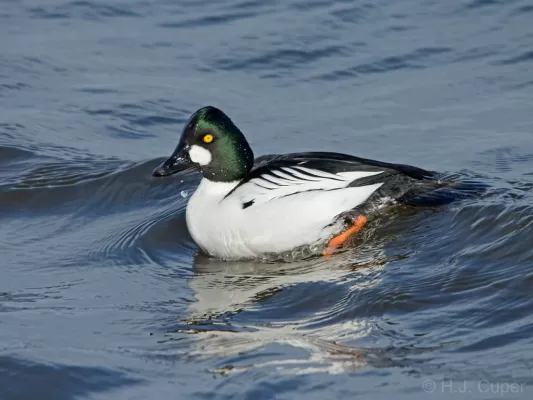Eurasian Teal
Eurasian Teal
-
Not yet spotted on Fladder
Spotted
The Eurasian Teal is a small, widespread dabbling duck, recognized for its agility in flight and often found in large flocks. Males boast a striking chestnut head with a broad green eye-patch, while females are subtly mottled brown.
Where to spot
Breeds across temperate Eurasia and winters widely throughout southern Europe, North Africa, the Middle East, and Asia. Found in a variety of freshwater habitats, including shallow wetlands, marshes, ponds, and slow-moving rivers.
How to spot
Look for its small size and fast, erratic flight. Males are distinctive with their chestnut and green head. Females are harder to identify but are typically accompanied by males. Listen for the male's distinct 'creak-creek' whistle, which gives the species its scientific name.
When to spot
Best observed during autumn and spring migration when large numbers gather, and throughout the winter in their non-breeding grounds. Breeding occurs in spring and summer.
Where to spot
Breeds across temperate Eurasia and winters widely throughout southern Europe, North Africa, the Middle East, and Asia. Found in a variety of freshwater habitats, including shallow wetlands, marshes, ponds, and slow-moving rivers.
How to spot
Look for its small size and fast, erratic flight. Males are distinctive with their chestnut and green head. Females are harder to identify but are typically accompanied by males. Listen for the male's distinct 'creak-creek' whistle, which gives the species its scientific name.
When to spot
Best observed during autumn and spring migration when large numbers gather, and throughout the winter in their non-breeding grounds. Breeding occurs in spring and summer.
Despite its small size, the Eurasian Teal is a long-distance migrant, with populations traveling thousands of kilometers between breeding grounds in northern Eurasia and wintering areas in southern Europe, Africa, and Asia.
Loading...
Spotted
No recently spotted birds
No observations
Loading...
Nothing spotted yet

